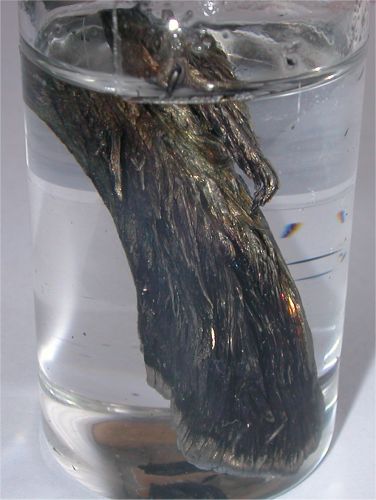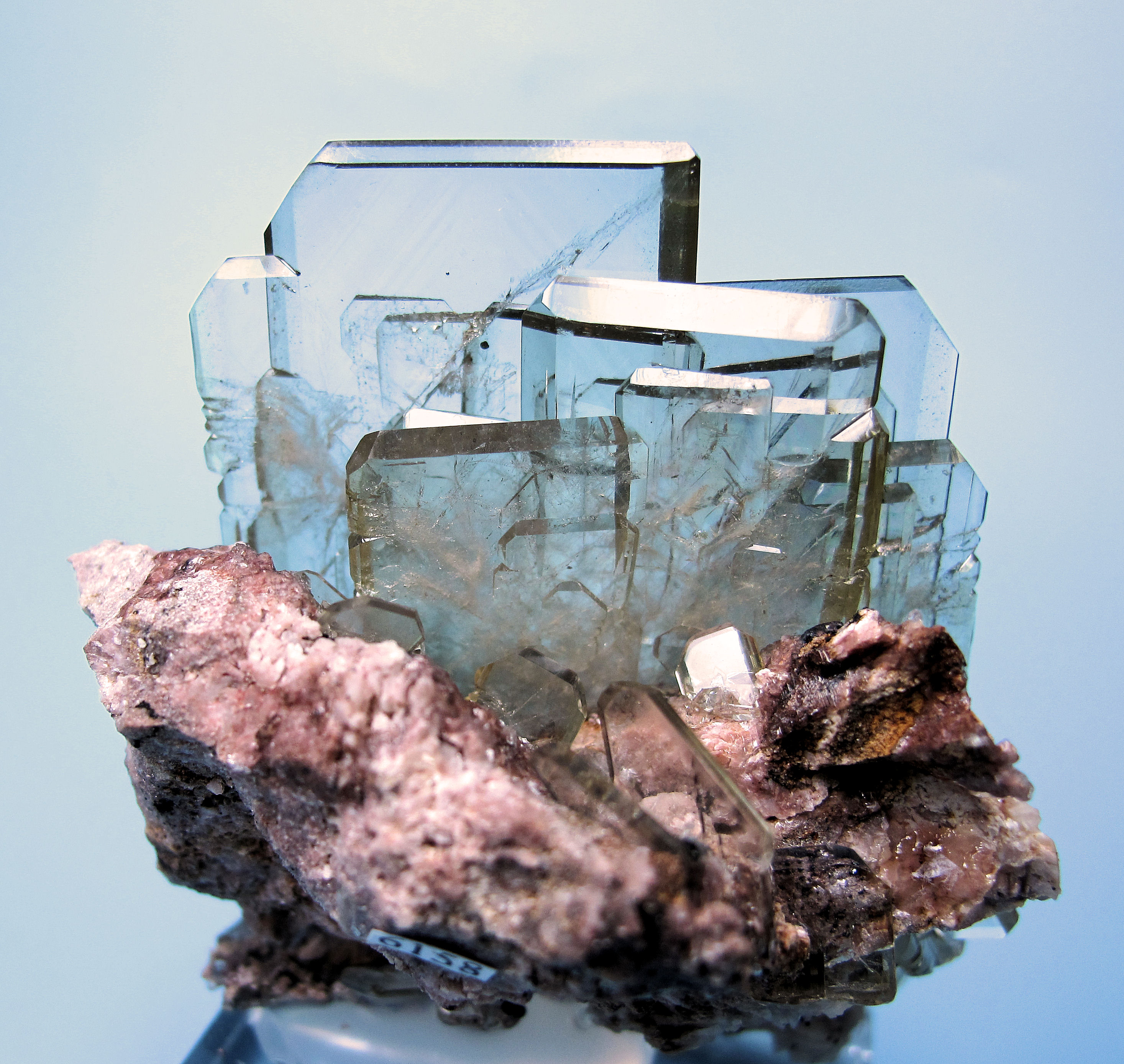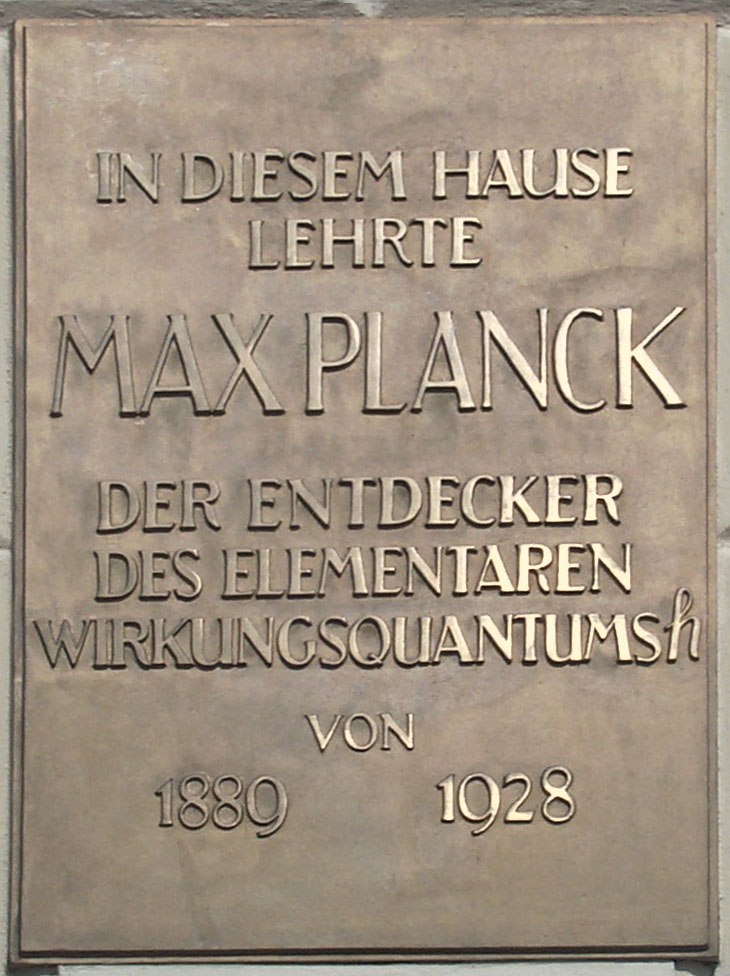|
Recoil Temperature
In condensed matter physics and atomic physics, the recoil temperature is a fundamental lower limit of temperature attainable by some laser cooling schemes. When an atom decays from an excited electronic state at rest to a lower energy electronic state by the spontaneous emission of a photon, due to conservation of momentum, the atom gains momentum equivalent to the momentum of the photon. This kinetic energy gain corresponds to the recoil temperature of the atom. The recoil temperature is :T_\text = \frac = \frac, where * is the magnitude of the wavevector of the photon, * is the mass of the atom, * is the Boltzmann constant, *\hbar is the Planck constant, *p = \hbar k is the photon's momentum. In general, the recoil temperature is below the Doppler cooling limit for atoms and molecules, so sub-Doppler cooling techniques such as Sisyphus cooling are necessary to reach it. For example, the recoil temperature for the D2 lines of alkali atoms is typically on the order of 1&nbs ... [...More Info...] [...Related Items...] OR: [Wikipedia] [Google] [Baidu] |
Condensed Matter Physics
Condensed matter physics is the field of physics that deals with the macroscopic and microscopic physical properties of matter, especially the solid and liquid State of matter, phases, that arise from electromagnetic forces between atoms and electrons. More generally, the subject deals with condensed phases of matter: systems of many constituents with strong interactions among them. More exotic condensed phases include the superconductivity, superconducting phase exhibited by certain materials at extremely low cryogenic temperatures, the ferromagnetic and antiferromagnetic phases of Spin (physics), spins on crystal lattices of atoms, the Bose–Einstein condensates found in ultracold atomic systems, and liquid crystals. Condensed matter physicists seek to understand the behavior of these phases by experiments to measure various material properties, and by applying the physical laws of quantum mechanics, electromagnetism, statistical mechanics, and other theoretical physics, physic ... [...More Info...] [...Related Items...] OR: [Wikipedia] [Google] [Baidu] |
Momentum
In Newtonian mechanics, momentum (: momenta or momentums; more specifically linear momentum or translational momentum) is the product of the mass and velocity of an object. It is a vector quantity, possessing a magnitude and a direction. If is an object's mass and is its velocity (also a vector quantity), then the object's momentum (from Latin '' pellere'' "push, drive") is: \mathbf = m \mathbf. In the International System of Units (SI), the unit of measurement of momentum is the kilogram metre per second (kg⋅m/s), which is dimensionally equivalent to the newton-second. Newton's second law of motion states that the rate of change of a body's momentum is equal to the net force acting on it. Momentum depends on the frame of reference, but in any inertial frame of reference, it is a ''conserved'' quantity, meaning that if a closed system is not affected by external forces, its total momentum does not change. Momentum is also conserved in special relativity (with a mo ... [...More Info...] [...Related Items...] OR: [Wikipedia] [Google] [Baidu] |
Raman Cooling
In atomic physics, Raman cooling is a sub-recoil cooling technique that allows the cooling of atoms using optical methods below the limitations of Doppler cooling, Doppler cooling being limited by the recoil energy of a photon given to an atom. This scheme can be performed in simple optical molasses or in molasses where an optical lattice has been superimposed, which are called respectively free space Raman cooling and Raman sideband cooling. Both techniques make use of Raman scattering of laser light by the atoms. Two photon Raman process The transition between two hyperfine states of the atom can be triggered by two laser beams: the first beam excites the atom to a virtual excited state (for example because its frequency is lower than the real transition frequency), and the second beam de-excites the atom to the other hyperfine level. The frequency difference of the two beams is exactly equal to the transition frequency between the two hyperfine levels. Raman transitions are goo ... [...More Info...] [...Related Items...] OR: [Wikipedia] [Google] [Baidu] |
Magneto-optical Trap
In atomic, molecular, and optical physics, a magneto-optical trap (MOT) is an apparatus which uses laser cooling and a spatially varying magnetic field to create a Magnetic trap (atoms), trap which can produce samples of Ultracold atom, cold neutral atoms. Temperatures achieved in a MOT can be as low as several microkelvins, depending on the atomic species, which is two or three times below the Recoil temperature, photon-recoil limit. However, for atoms with an unresolved hyperfine structure, such as , the temperature achieved in a MOT will be higher than the Doppler cooling limit. A MOT is formed from the intersection of the zero of a weak Quadrupole magnet, quadrupolar magnetic field and six Circular polarization, circularly polarized Laser detuning, red-detuned optical molasses beams. Counterpropagating beams have opposite handed polarization. As atoms travel away from the zero field at the center of the trap, the spatially varying Zeeman effect, Zeeman shift brings an atomic ... [...More Info...] [...Related Items...] OR: [Wikipedia] [Google] [Baidu] |
Strontium
Strontium is a chemical element; it has symbol Sr and atomic number 38. An alkaline earth metal, it is a soft silver-white yellowish metallic element that is highly chemically reactive. The metal forms a dark oxide layer when it is exposed to air. Strontium has physical and chemical properties similar to those of its two vertical neighbors in the periodic table, calcium and barium. It occurs naturally mainly in the minerals celestine and strontianite, and is mostly mined from these. Both strontium and strontianite are named after Strontian, a village in Scotland near which the mineral was discovered in 1790 by Adair Crawford and William Cruickshank; it was identified as a new element the next year from its crimson-red flame test color. Strontium was first isolated as a metal in 1808 by Humphry Davy using the then newly discovered process of electrolysis. During the 19th century, strontium was mostly used in the production of sugar from sugar beets (see strontian proces ... [...More Info...] [...Related Items...] OR: [Wikipedia] [Google] [Baidu] |
Alkaline Earth
The alkaline earth metals are six chemical elements in group 2 of the periodic table. They are beryllium (Be), magnesium (Mg), calcium (Ca), strontium (Sr), barium (Ba), and radium (Ra).. The elements have very similar properties: they are all shiny, silvery-white, somewhat reactive metals at standard temperature and pressure. Together with helium, these elements have in common an outer s orbital which is full —that is, this orbital contains its full complement of two electrons, which the alkaline earth metals readily lose to form cations with charge +2, and an oxidation state of +2. Helium is grouped with the noble gases and not with the alkaline earth metals, but it is theorized to have some similarities to beryllium when forced into bonding and has sometimes been suggested to belong to group 2. All the discovered alkaline earth metals occur in nature, although radium occurs only through the decay chain of uranium and thorium and not as a primordial element. There hav ... [...More Info...] [...Related Items...] OR: [Wikipedia] [Google] [Baidu] |
Alkali Metal
The alkali metals consist of the chemical elements lithium (Li), sodium (Na), potassium (K),The symbols Na and K for sodium and potassium are derived from their Latin names, ''natrium'' and ''kalium''; these are still the origins of the names for the elements in some languages, such as German and Russian. rubidium (Rb), caesium (Cs), and francium (Fr). Together with hydrogen they constitute Group (periodic table)#Group names, group 1, which lies in the s-block of the periodic table. All alkali metals have their outermost electron in an s-orbital: this shared electron configuration results in their having very similar characteristic properties. Indeed, the alkali metals provide the best example of periodic trends, group trends in properties in the periodic table, with elements exhibiting well-characterised Homologous series, homologous behaviour. This family of elements is also known as the lithium family after its leading element. The alkali metals are all shiny, hardness, sof ... [...More Info...] [...Related Items...] OR: [Wikipedia] [Google] [Baidu] |
Fraunhofer Lines
The Fraunhofer lines are a set of spectral absorption lines. They are dark absorption lines, seen in the optical spectrum of the Sun, and are formed when atoms in the solar atmosphere absorb light being emitted by the solar photosphere. The lines are named after German physicist Joseph von Fraunhofer, who observed them in 1814. Discovery In 1802, English chemist William Hyde WollastonMelvyn C. UsselmanWilliam Hyde WollastonEncyclopædia Britannica, retrieved 31 March 2013 was the first person to note the appearance of a number of dark features in the solar spectrum. In 1814, Joseph von Fraunhofer independently rediscovered the lines and began to systematically study and measure their wavelengths. He mapped over 570 lines, designating the most prominent with the letters A through K and weaker lines with other letters. Modern observations of sunlight can detect many thousands of lines. About 45 years later, Gustav Kirchhoff and Robert Bunsen noticed that several Fraunhofer li ... [...More Info...] [...Related Items...] OR: [Wikipedia] [Google] [Baidu] |
Sisyphus Cooling
In ultra-low-temperature physics, Sisyphus cooling, the Sisyphus effect, or polarization gradient cooling involves the use of specially selected laser light, hitting atoms from various angles to both cool and trap them in a potential well, effectively rolling the atom down a hill of potential energy until it has lost its kinetic energy. It is a type of laser cooling of atoms used to reach temperatures below the Doppler cooling limit. This cooling method was first proposed by Claude Cohen-Tannoudji in 1989, motivated by earlier experiments which observed sodium atoms cooled below the Doppler limit in an optical molasses. Cohen-Tannoudji received part of the Nobel Prize in Physics in 1997 for his work. The technique is named after Sisyphus, a figure in the Greek mythology who was doomed, for all eternity, to roll a stone up a mountain only to have it roll down again whenever he got it near the summit. Method Sisyphus cooling can be achieved by shining two counter-propagating laser ... [...More Info...] [...Related Items...] OR: [Wikipedia] [Google] [Baidu] |
Sub-Doppler Cooling
Sub-Doppler cooling is a class of laser cooling techniques that reduce the temperature of atoms and molecules below the Doppler cooling limit. In experiment implementation, Doppler cooling is limited by the broad natural linewidth of the lasers used in cooling. Regardless of the transition used, however, Doppler cooling processes have an intrinsic cooling limit that is characterized by the momentum recoil from the emission of a photon from the particle. This is called the recoil temperature and is usually far below the linewidth-based limit mentioned above. By laser cooling methods beyond the two-level approximations of atoms, temperature below this limit can be achieved. Optical pumping between the sublevels that make up an atomic state introduces a new mechanism for achieving ultra-low temperatures. The essential feature of sub-Doppler cooling is the non-adiabaticity of the moving atoms to the light field. For a spatially dependent light field, the orientation of moving atoms is ... [...More Info...] [...Related Items...] OR: [Wikipedia] [Google] [Baidu] |
Doppler Temperature
Doppler cooling is a mechanism that can be used to trap and slow the motion of atoms to cool a substance. The term is sometimes used synonymously with laser cooling, though laser cooling includes other techniques. History Doppler cooling was simultaneously proposed by two groups in 1975, the first being David J. Wineland and Hans Georg Dehmelt and the second being Theodor W. Hänsch and Arthur Leonard Schawlow. It was first demonstrated by Wineland, Drullinger, and Walls in 1978 and shortly afterwards by Neuhauser, Hohenstatt, Toschek and Dehmelt. One conceptually simple form of Doppler cooling is referred to as optical molasses, since the dissipative optical force resembles the viscous drag on a body moving through molasses. Steven Chu, Claude Cohen-Tannoudji and William D. Phillips were awarded the 1997 Nobel Prize in Physics for their work in laser cooling and atom trapping. Brief explanation Doppler cooling involves light with frequency tuned slightly below an electroni ... [...More Info...] [...Related Items...] OR: [Wikipedia] [Google] [Baidu] |
Planck Constant
The Planck constant, or Planck's constant, denoted by h, is a fundamental physical constant of foundational importance in quantum mechanics: a photon's energy is equal to its frequency multiplied by the Planck constant, and the wavelength of a matter wave equals the Planck constant divided by the associated particle momentum. The constant was postulated by Max Planck in 1900 as a proportionality constant needed to explain experimental black-body radiation. Planck later referred to the constant as the "quantum of Action (physics), action". In 1905, Albert Einstein associated the "quantum" or minimal element of the energy to the electromagnetic wave itself. Max Planck received the 1918 Nobel Prize in Physics "in recognition of the services he rendered to the advancement of Physics by his discovery of energy quanta". In metrology, the Planck constant is used, together with other constants, to define the kilogram, the SI unit of mass. The SI units are defined in such a way that, w ... [...More Info...] [...Related Items...] OR: [Wikipedia] [Google] [Baidu] |






